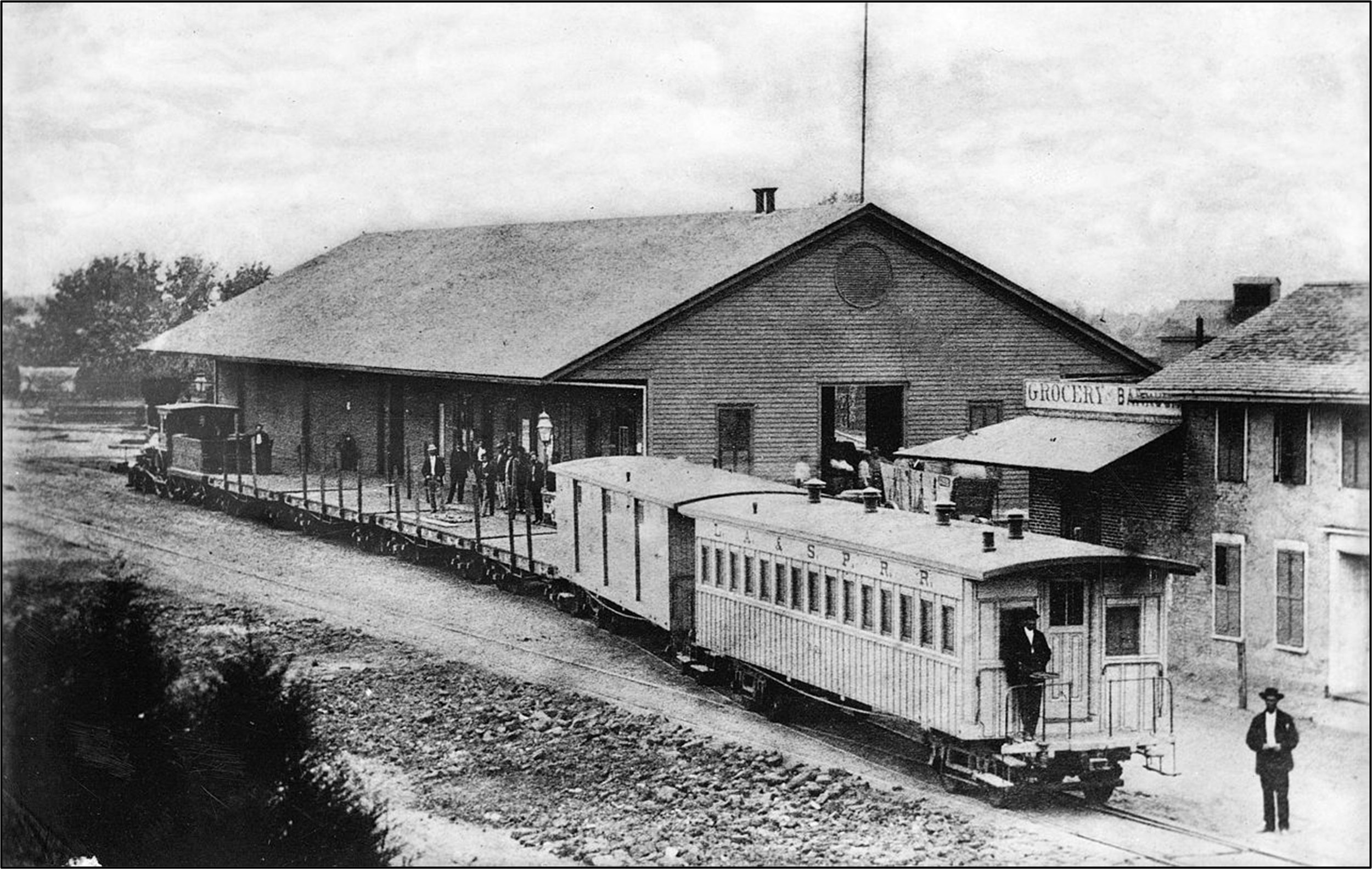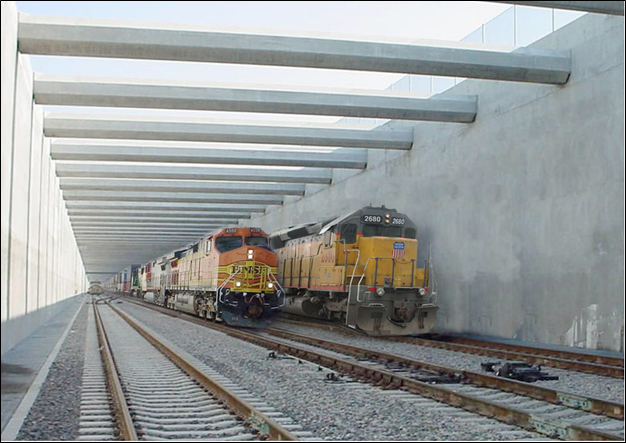The First Railroad in Southern California By Jim Shneer
On October 26, 1869 the first railroad in the Los Angeles area and indeed the first railroad in Southern California began commercial operations. The 21-mile long Los Angeles and San Pedro Railroad extended from Wilmington to its new station at the southwest corner of Alameda and Commercial Streets in Los Angeles.
Map of the Los Angeles area with the then boundaries of LA County in red.
The green arrow marks the route of the LA & SP RR running almost exactly north/south.
Location of the LA &SP RR depot on the southwest corner of Alameda and Commercial
Los Angeles Station
Wilmington Station
Los Angeles at that time was a few square miles in area and had a population of 5,728 people (1870 census). Phineas Banning, a state senator from Wilmington and an important figure in Wilmington's development was the force behind bringing the railroad into being. Since much of the funding for the railroad was to be public money, a vote was needed. The voters approved the measure on April 3, 1868. Phineas Banning and his partner Henry Tichenor were the winners among multiple bidders to develop the railroad. Groundbreaking for construction took place on September 20, 1868. Since much of the right-of-way was donated, the right of way cost from Wilmington to the Los Angeles city limits, near present day downtown, cost $8. The legacy of that right-of-way exists today in the form of the location of the Alameda Corridor, the below ground, triple tracked passage leading to and from the Port of Los Angeles.
Two trains in the Alameda Corridor
Although over the course of its history, the railroad owned four locomotives, the 1870 tax assessment showed the railroad's rolling stock to be only two locomotives plus two passenger cars, one smoking car, one express car, four covered freight cars and 12 flat cars.
Locomotive "San Gabriel"
The "San Gabriel" was the LA & SP RR's first locomotive. It went into service on January 14, 1869 but was rendered unusable before the railroad was completed. Built by the Vulcan Iron Works, it was originally manufactured for the San Francisco and Alameda RR and was shipped by boat to Wilmington.
Locomotives "Los Angeles" and "San Pedro"
The "San Gabriel" was replaced by the "Los Angeles" and the "San Pedro"; both built by Schenectady Locomotive Works.
For several years the Southern Pacific Railroad had been building south from the San Francisco Bay area. There were rumors that the railroad would turn east without reaching Los Angeles. Los Angeles, on the other hand, was looking to be the terminus of another transcontinental railway. Upon being approached by a committee from Los Angeles, the Southern Pacific proposed that in exchange for its building into Los Angeles, they be given the LA & SP RR. In July, 1872 there was a meeting about the Southern Pacific proposal and the city of Los Angeles agreed to donate the stock it held in the LA & SP RR. Finally, on November 5, 1872, in a county-wide election, voters decided to accept the Southern Pacific's offer. The final vote was 1,896 for the Southern Pacific proposal and 724 against. Not only did this transaction give Southern Pacific control of a profitable railroad but a monopoly at Wilmington's port facilities for 20 years. It also insured that Los Angeles would become a major railway terminus. The LA & SP RR was formally transferred to the Southern Pacific on April 23, 1873.
1876 map of the Southern Pacific showing the segment which had been the LA & SP RR
Jim is a former aerospace engineering manager who, since retiring, has become an author and has lectured throughout the South Bay on a variety of historical subjects. He has written many articles for the Palos Verdes Pulse which may be found at https://www.palosverdespulse.com/search?q=shneer.
To see the books he has in print, check out https://www.lulu.com/spotlight/gg2490.
And you can read more about his local historical research at https://tinyurl.com/yarrnasm.















